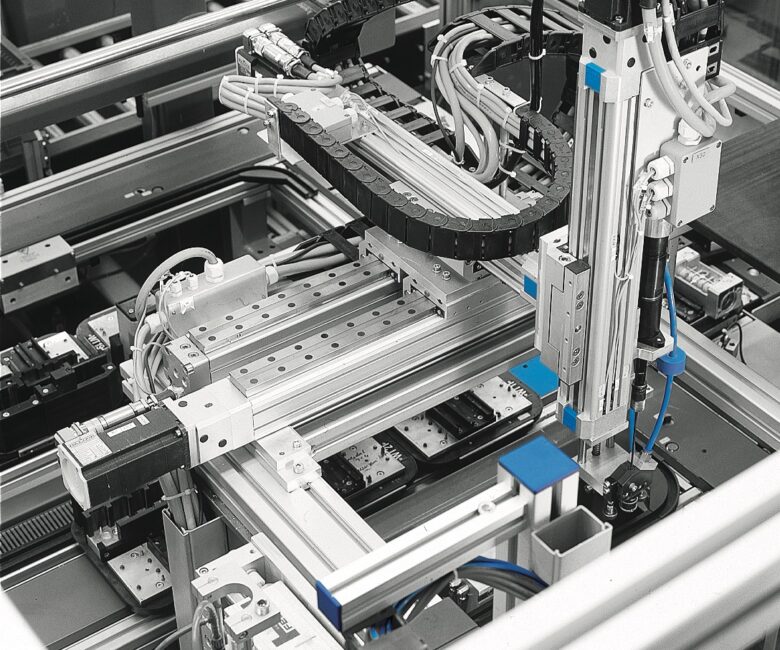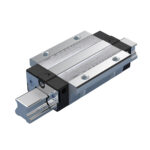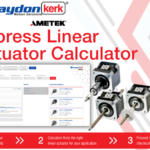For the annual Design World Trends issue, we asked industry experts to share their insights into linear-motion trends. Here’s more of what they had to say on linear actuators, linear guides, and stages.

Meet the experts
Dave Walden | Applications engineer • PBC Linear
Eric Rice | Product market manager — electric automation • Festo
Samuel Orozco | Product marketing manager — Electric actuators • Emerson
Eric Falasco | Product manager — Screws, bushing/shafting, small handling modules • Bosch Rexroth
Andy Zaske | V.P. of sales and marketing • Tolomatic
Justin Lackey | Product manager — Systems • Bosch Rexroth
Andrew Jung | Director of engineering • Bishop-Wisecarver
Tim Sharkey | Director of market management for electric automation • Festo
Saurabh Khetan | Product line manager — Leadscrews • Thomson Industries Inc.
What’s new in linear guide slides and ways?
Walden: This past year, we’ve seen linear guidance used for aerial vehicle (drone) hangers to service and protect the vehicles when not in use.
Rice: There are new ways of integrating the linear guide and linear bearing into the actuator body. Instead of being constrained by manufacturers’ available dimensions, the OEM uses one of these new guides where it makes the most sense for linear motion. For example, the guide can be wider for higher moment loads or mounted closer to the actuator base to strengthen the carrying system foundation. Festo has developed a guide that is part of the actuator body, which makes more efficient use of materials and reduces weight. Assembly is easier, and performance is higher.
What’s behind the growth of leadscrew, ballscrew, and roller screw applications?
Orozco: Leadscrews are known for high static force applications, withstanding excessive vibration, and operating quietly. They’re cost-effective options and have been traditionally used in machine slides and heavy-lifting applications, such as vises, presses, and jacks. However, miniature as well as precise leadscrews are attracting industries such as photonics and autofocusing optics.
Ballscrews are the most commonly used screws that provide high-performance solutions for a range of applications where high loads, high speeds, precision driving, durability, and value are prerequisites. Roller screws are more expensive than but outperform the capabilities of ballscrews. Roller screws are well suited for heavy loads, high duty, high rotational speed, high acceleration, and rigidity, and for operation in harsh environments. Roller screws are good for high-precision applications with high positioning accuracy and repeatability.
Falasco: Adoption of ballscrews and especially roller screws is due to more companies switching from hydraulic to electromechanical technologies for cleanliness and economic reasons. Roller screws offer high load capacity in a small footprint, and ballscrews offer high load and (with recirculating ball bearing technology) moderately high speed capacity. Will ballscrews and roller screws replace all hydraulics applications? No, but change is happening in the linear-motion world, and customers see the benefits of electromechanical solutions that similar hydraulics can’t offer.
Rice: Ballscrews are a primary mechanical drive system in our linear actuators. They provide high-precision motion and positional repeatability along with high forces. Engineers can easily optimize ballscrews to the application by simply changing the lead or pitch of the screw. Roller screws extend these benefits by increasing the force capabilities and are now used frequently in high-force applications. Roller screws are encroaching into the high-force areas traditionally dominated by fluid-power actuators.
Zaske: We’ve been a primary manufacturer of planetary roller screws for over a decade and see an increasing interest in and application of roller screws due to their dense power capability and long life. Customers consider them a key component as they explore ways to eliminate or reduce hydraulics in production applications. This doesn’t mean that roller screws are a panacea, but with a proper understanding of their benefits and limitations, we see planetary roller screw applications continuing to grow for a long time.
Describe how motion-subassembly design work is increasingly outsourced.
Rice: OEMs that outsource subassemblies gain competitive advantages. These turnkey solutions decrease engineering time and procurement costs. Outsourcing shortens design cycles and speeds up new machine development and production. Areas of acute interest for outsourcing today include XY tables and Cartesian gantries. These systems offer maximum work envelopes in a compact footprint; do not require safety guarding; are fast, flexible, and precise across the entire envelope; and are more cost-effective than an articulated arm and SCARA robots in many applications.

Lackey: It all began with the semiconductor industry — partnering with customers to provide completely engineered-to-specification subassemblies for wafer lifts that fall outside of the standard catalog product offering. While Rexroth currently supplies thousands of engineered-to-specification subassemblies in the semiconductor market per year, we see increased demand for custom-engineered or engineered-to-specification subassemblies in other industry segments.
Jung: Bishop-Wisecarver currently provides stages, gantries, and XY tables to support the needs and cost constraints of low to high-accuracy applications. With evolving design features, more subassemblies are completed in-house to reduce leadtime and produce high-quality products.

How has the convergence of ISO, DIN, and JIS standards affected OEMs?
Orozco: It’s difficult to assimilate change, especially when industry standards have been established for a long time. Some of these standards (depending on the feature or geometry) have similar specifications varying in items, such as tolerance or load capacity differences for ballscrews. Customers and manufacturers have had to update processes; change quality inspection routines; and adjust machine assemblies to accommodate updated standards. Over the long term, universal standards will benefit the industry and customers.
Jung: There’s been increased demand for components that conform to different materials standards. While having suppliers globally, conforming to ISO, DIN, and JIS standards hasn’t been an issue. Although the three standards have very similar requirements, there are some differences — and we understand the differences to provide optimal solutions for our customers.
What value-add services do you provide?
Sharkey: We’ve invested heavily in online, free engineering productivity tools and our customer solutions center. OEMs are under pressure to become more efficient and hold down costs, and suppliers help the OEMs along two important tracks. First, suppliers must continually improve product capabilities and features, such as assured interoperability, small size, and energy efficiency. Second, suppliers must decrease engineering and assembly time.
Rice: For OEMs looking for XY tables and Cartesian robots, Festo has developed an online engineering tool, Handling Guide Online, that compresses the design process from an industry-standard two weeks down to 20 minutes. At the end of the Handling Guide Online session, the OEM receives a 3D CAD drawing that enables machine design to continue while the unit is being kitted, assembled, and tested. The OEM receives a bill of materials, an estimated delivery date, and a quote. Handling Guide Online lowers internal costs and makes the OEM more competitive.
Khetan: We don’t offer engineering services per se, but during detailed engineer-to-engineer discussions with mature customers about new or ongoing programs, we’ve provided engineering support and specialized services to better understand and complement the customer’s design.
Lackey: Over the last few years, there’s been a growing need for completely engineered linear solutions. As the goal is to keep profitability up and costs down, we see many companies reducing or minimizing design and electrical engineer headcounts … and here, our open-market tools can help minimize overhead.
For example, customers can download LinSelect, our free, easy-to-use sizing software, to input application parameters and find multiple solutions. The software sizes individual axes, multi-axis gantry systems, and electromechanical presses, and the outputs will also size motor and drive needs. With a couple of clicks of the mouse, engineers get downloadable models. Some of these standard catalog products include linear modules, connection bracketry, motors, drives, cables, industrial PLCs, and HTML-based drag-and-drop programming software with our Smart Mechatronics product. Customers who use Smart Mechatronics solutions keep overhead down by minimizing the need for design and electrical engineers.
Sharkey: For complex linear-actuated Cartesian systems that fall outside of the Handling Guide Online parameters, the Festo customer solutions center at our Mason, Ohio Global Production Center works with customers to design and build cartesian subassembly. Customer solutions also designs and assembles the gantry’s control cabinet for plug-and-play setup and function block programming. With our Electric Motion Sizing software and Automation Suite software, mechanical engineers can select all motion components knowing they’re interoperable. The sizing tool file gives the purchasing agent a complete bill of materials that eliminates potential order errors. And the controls engineer receives a file that contains all operational parameters to commission the unit directly on the commissioning software, thus saving precious time.
Read the rest of our 14 experts’ insights in Part 1 of this series.







Leave a Reply
You must be logged in to post a comment.